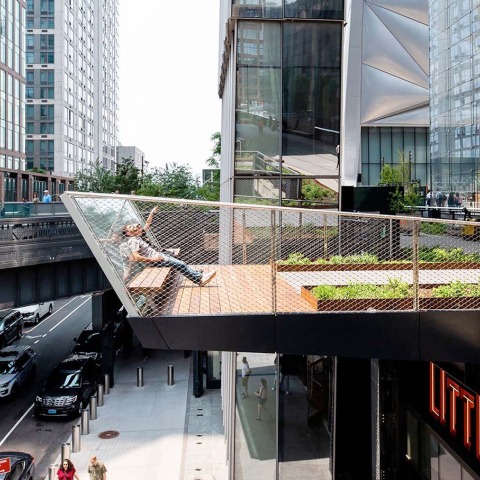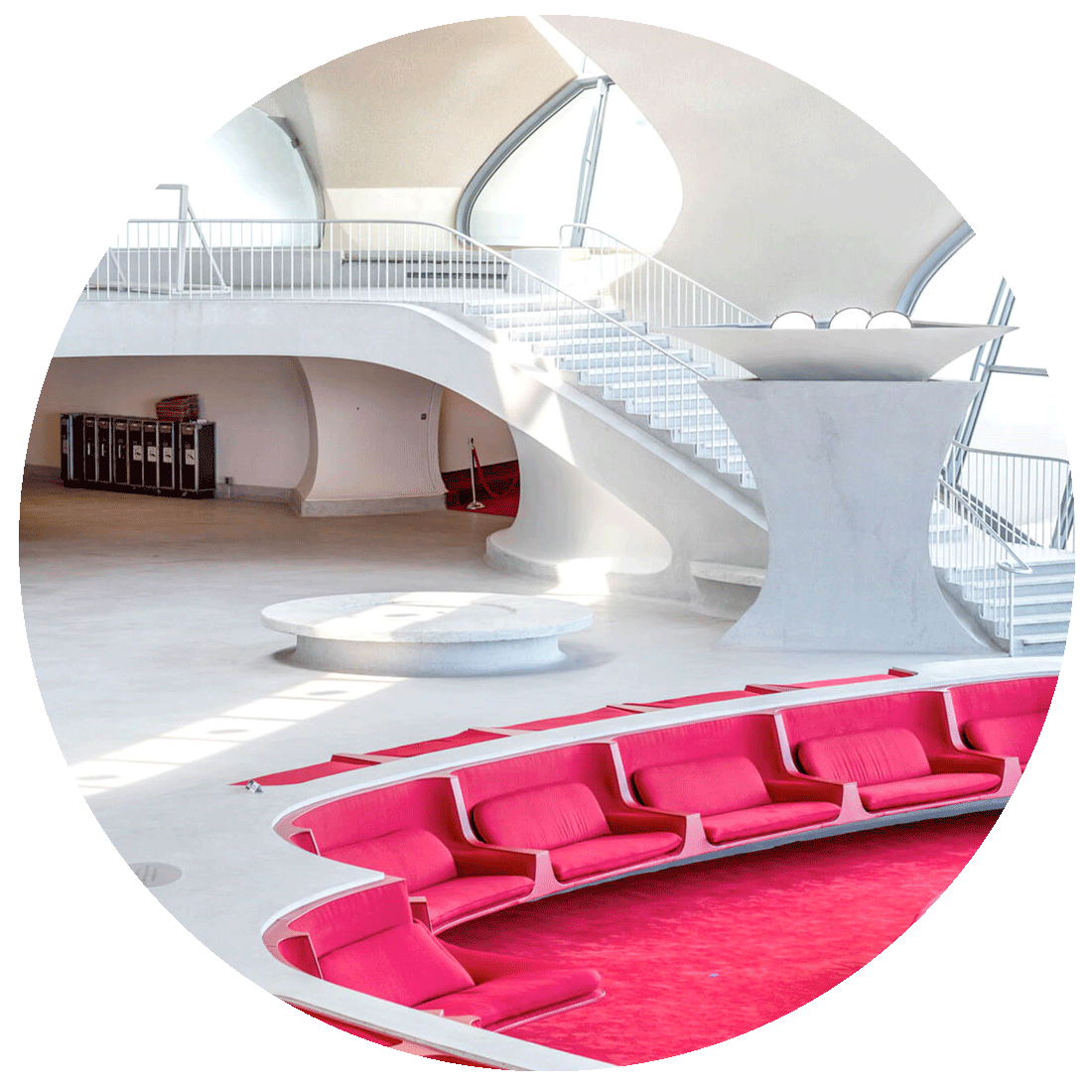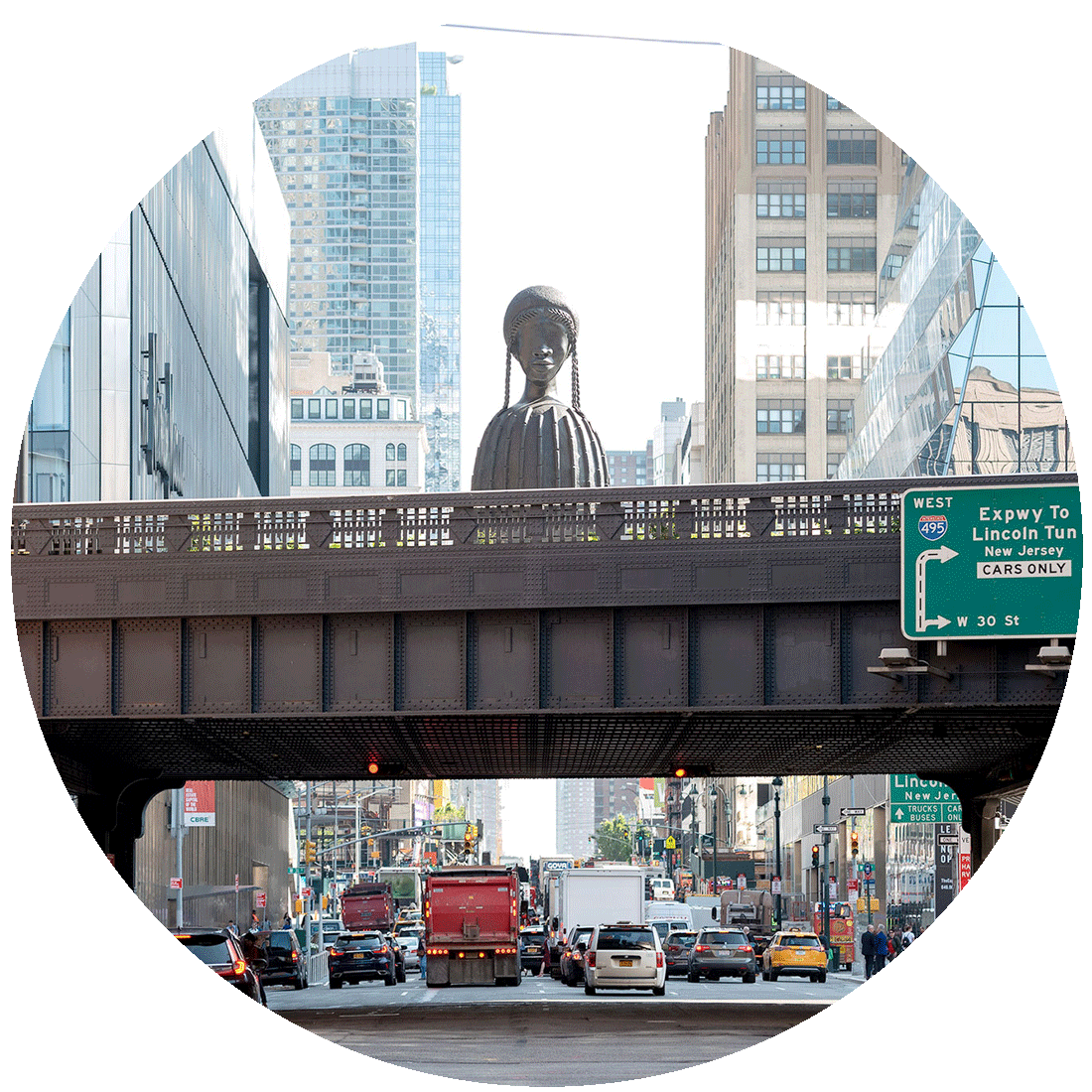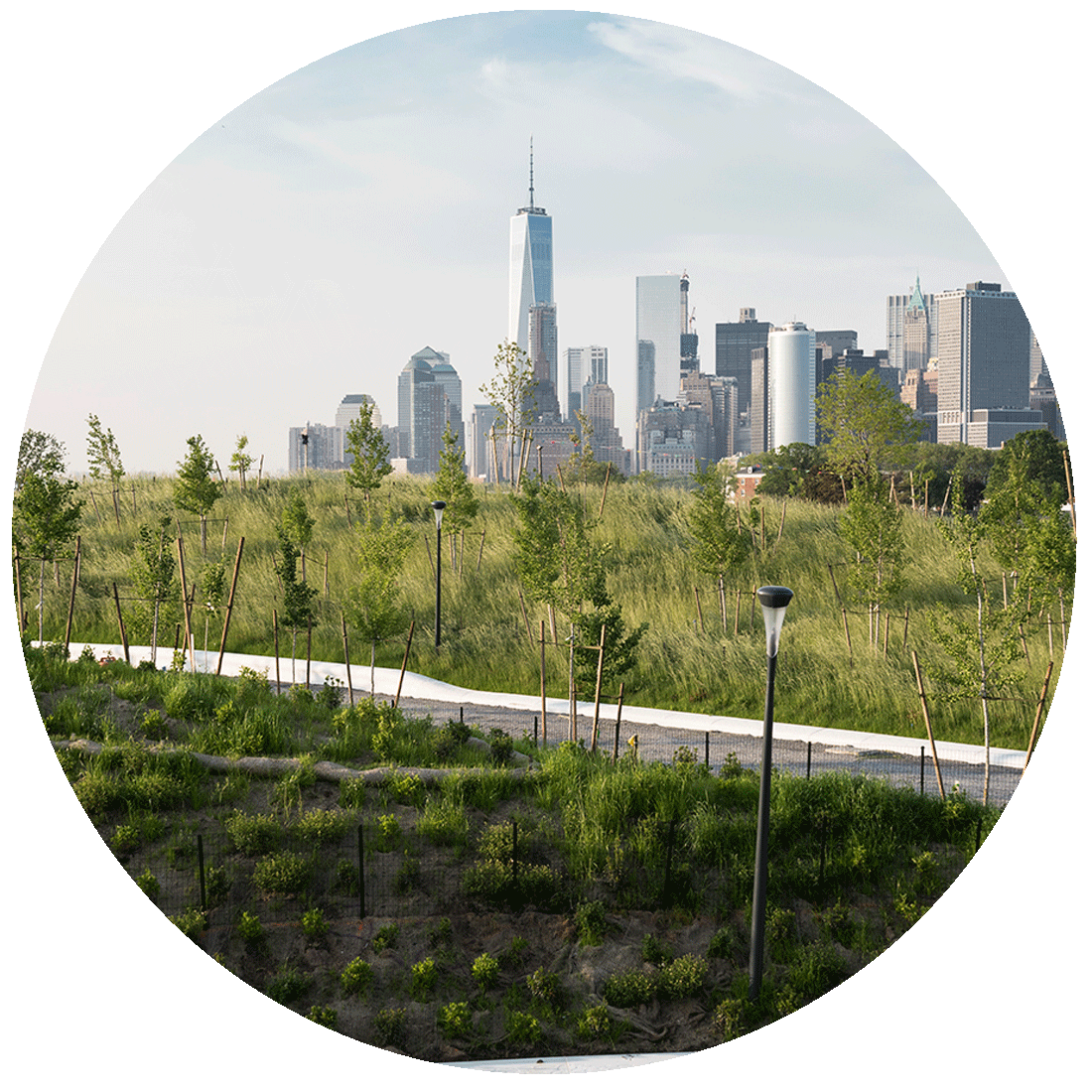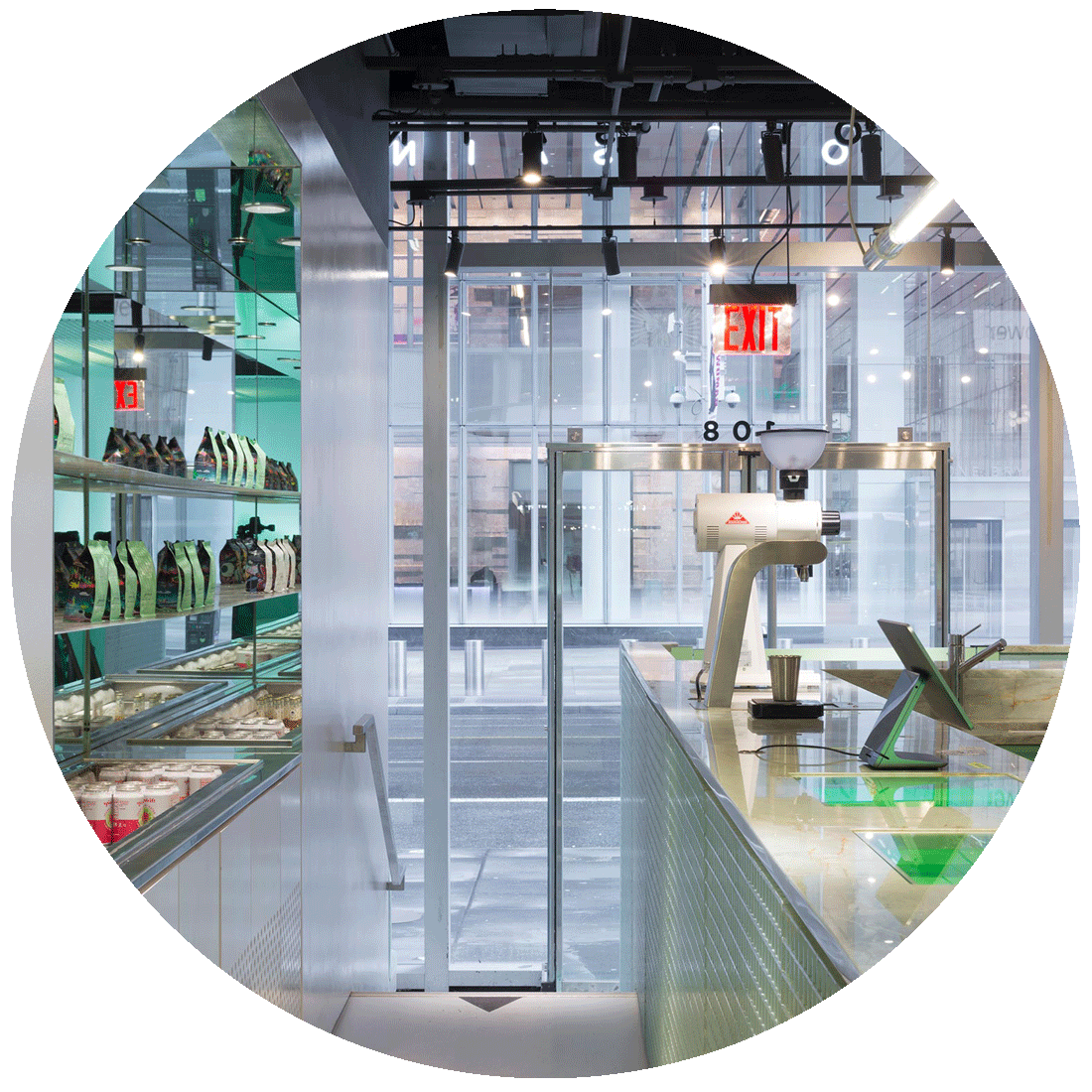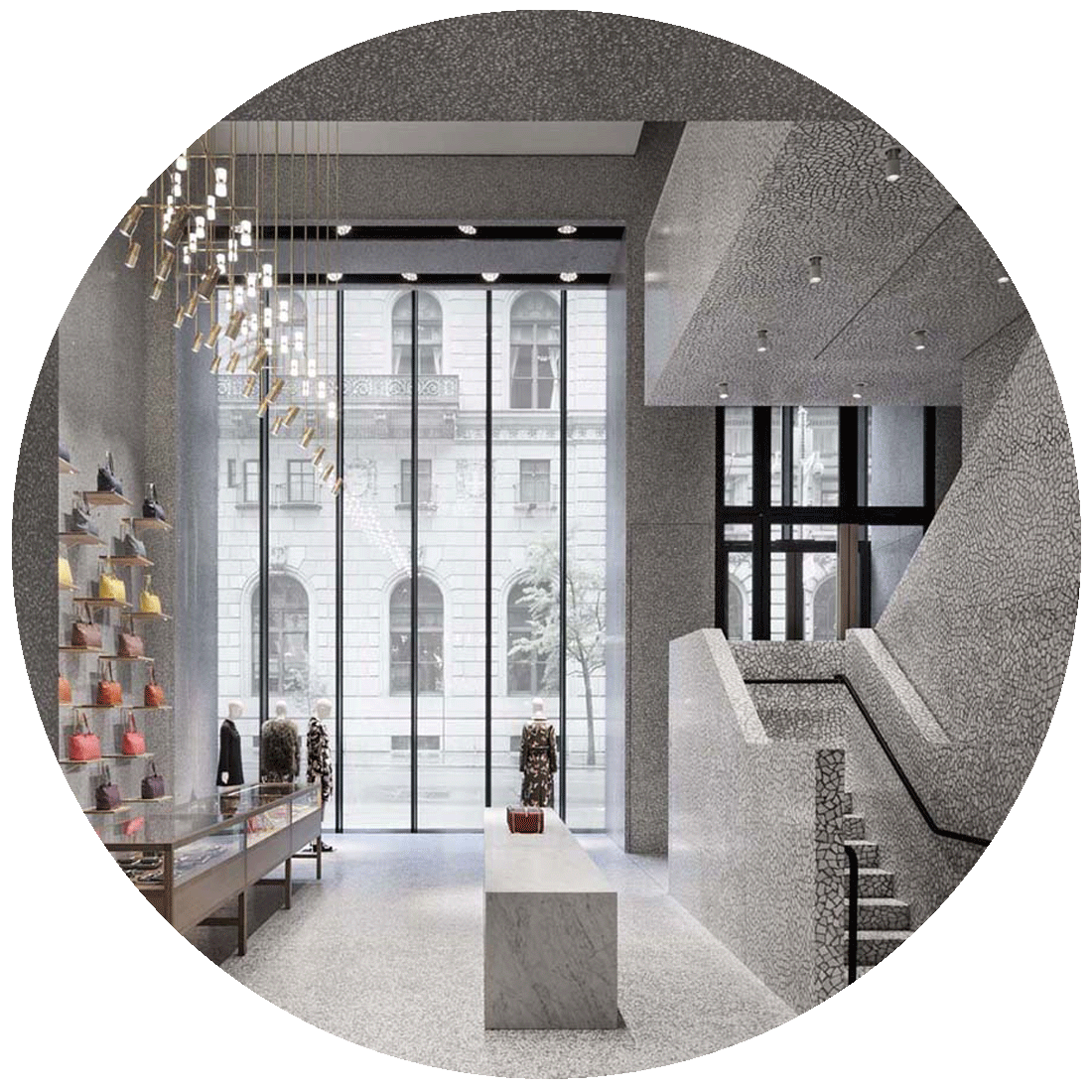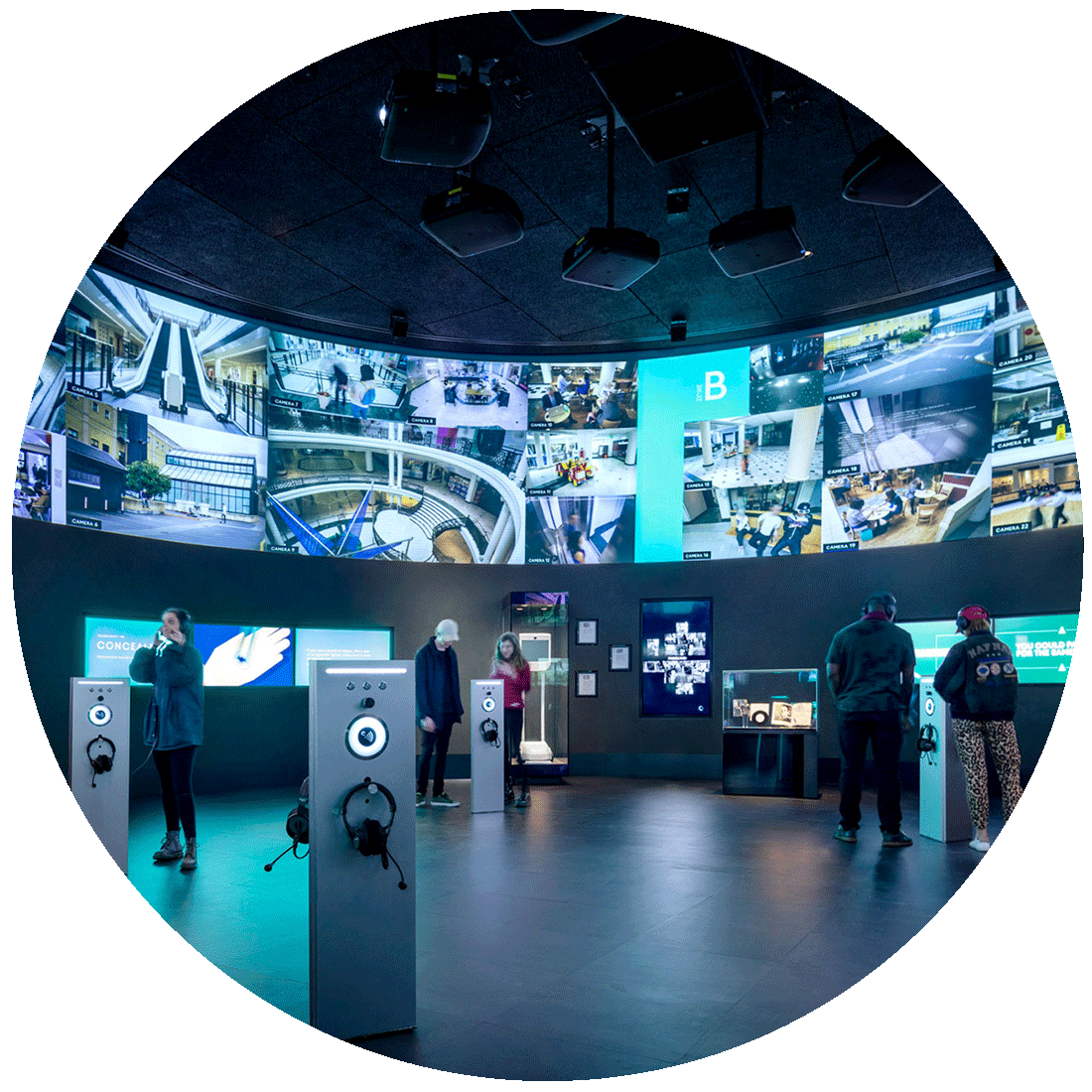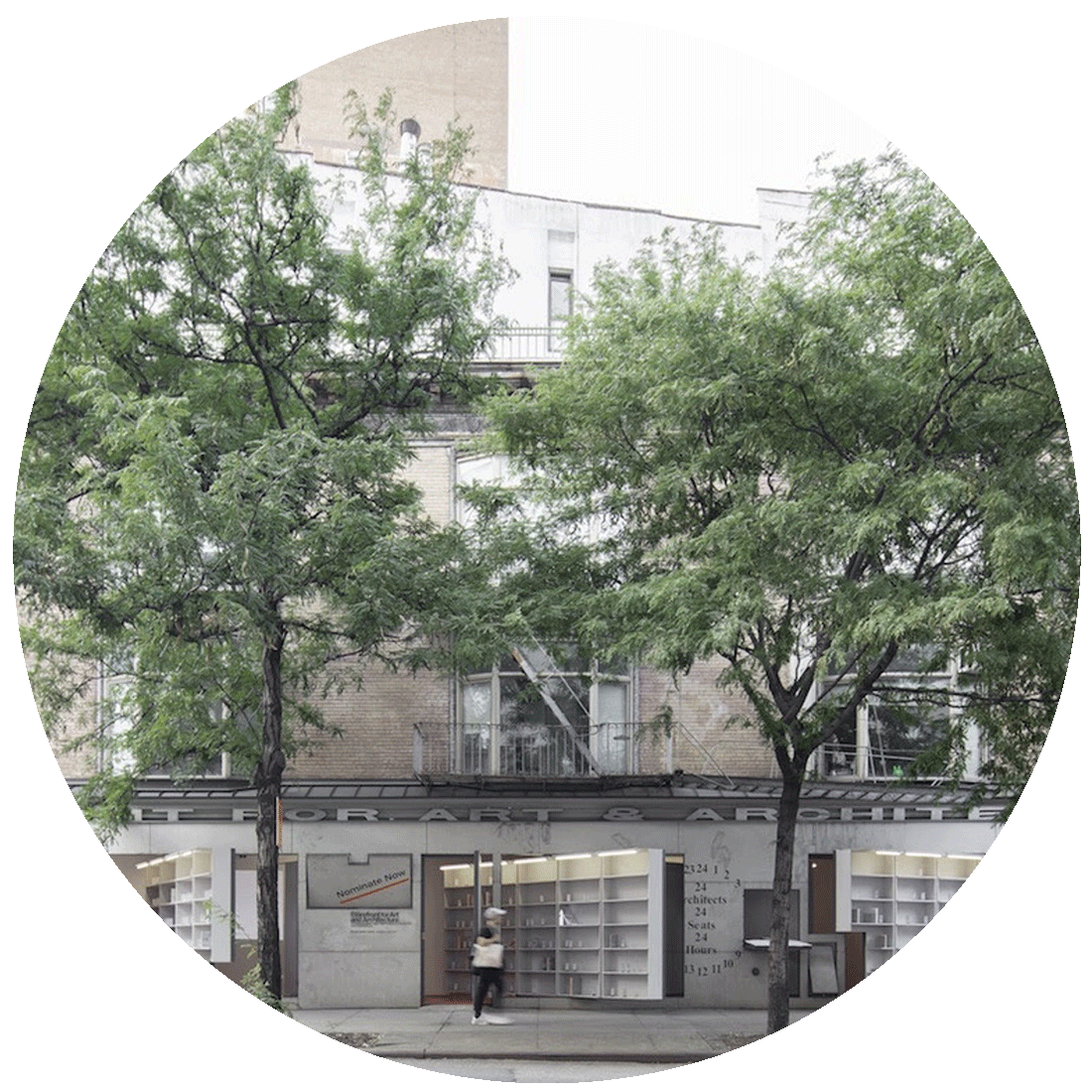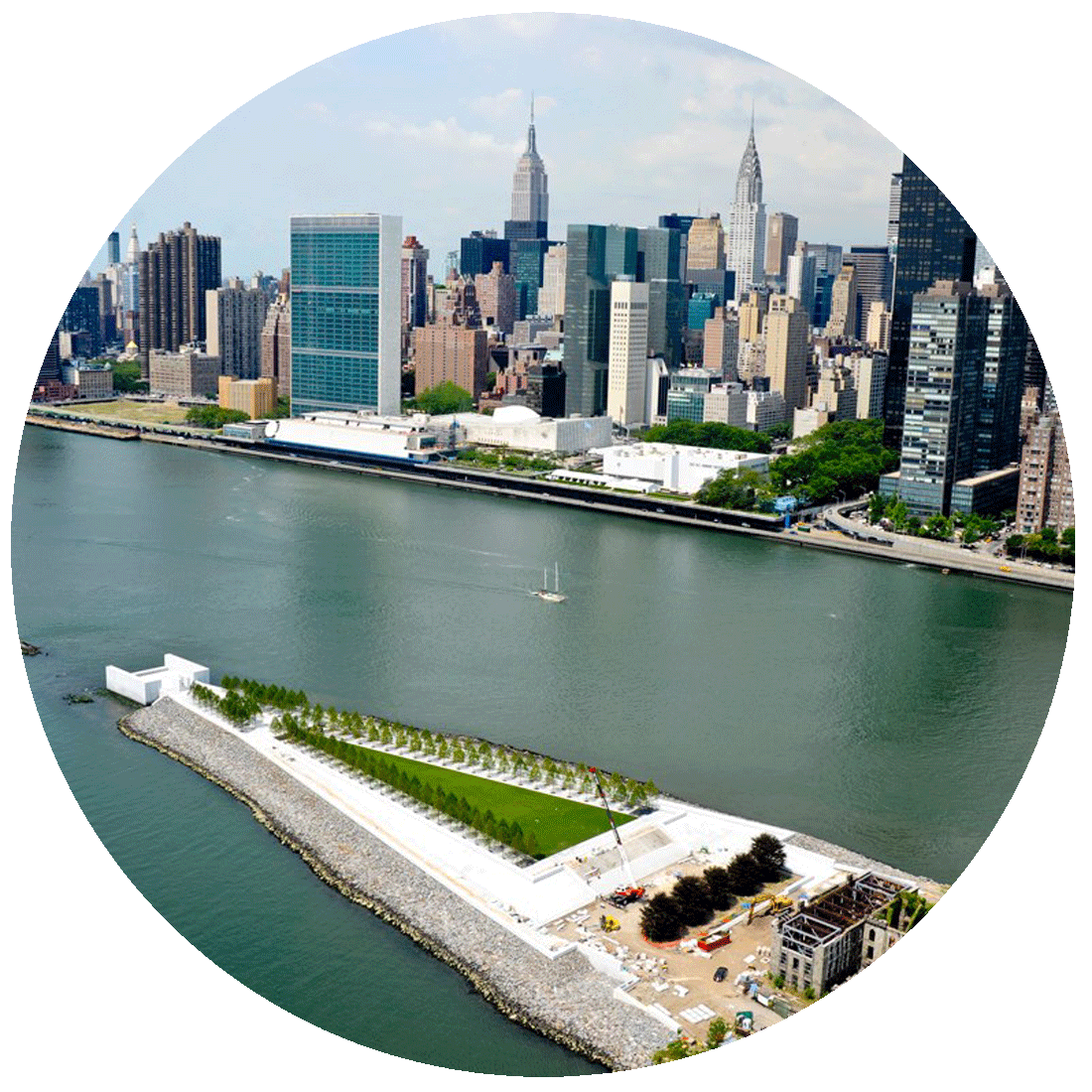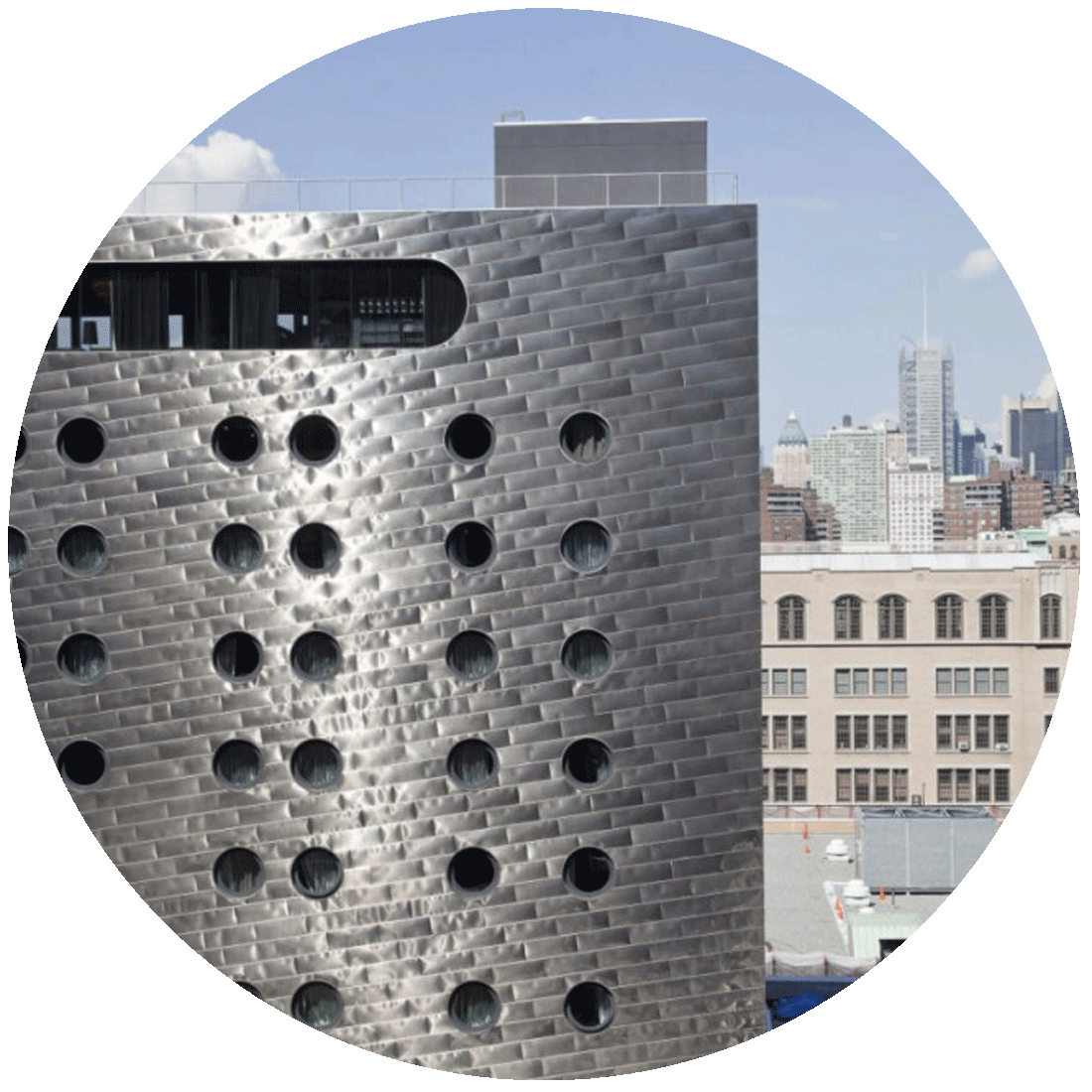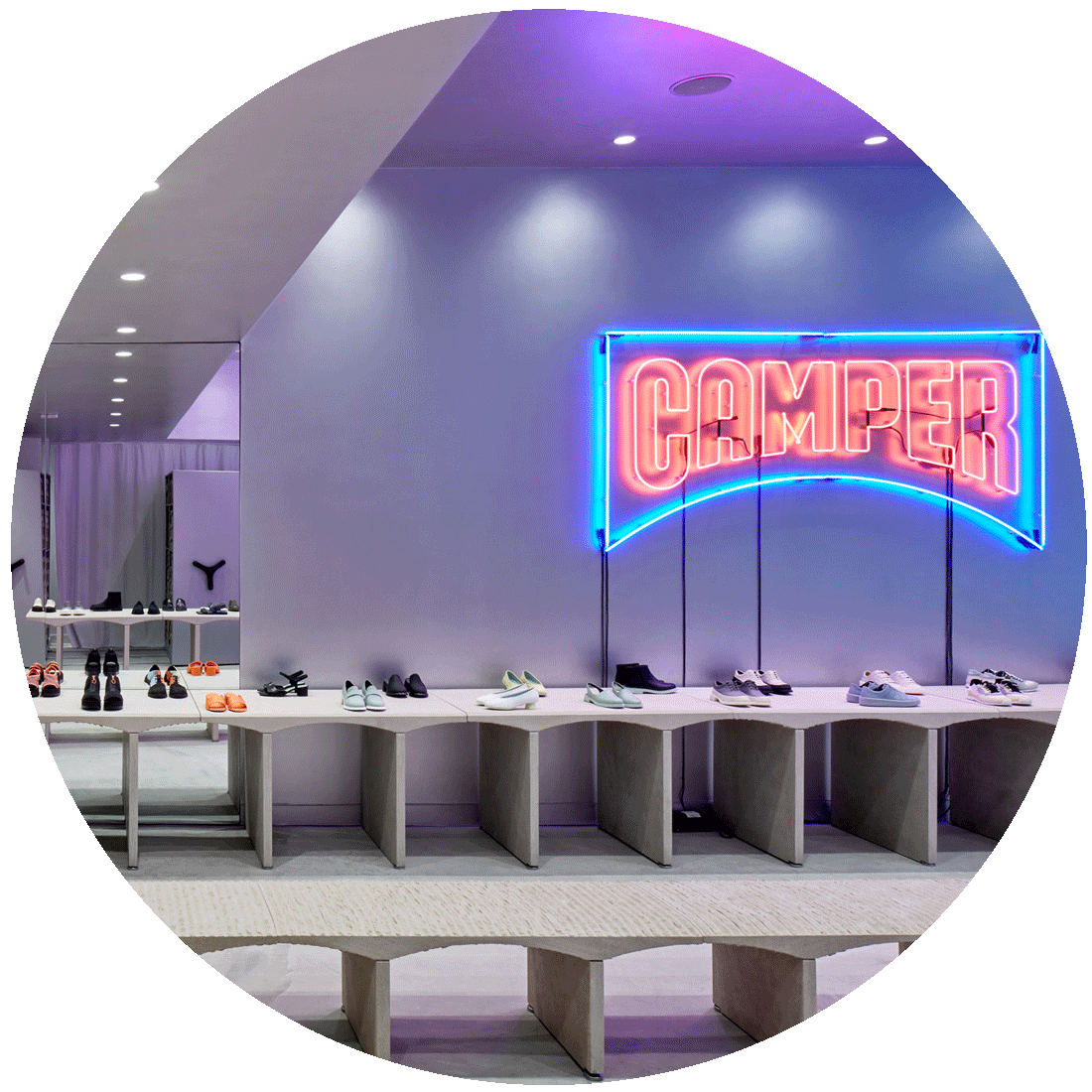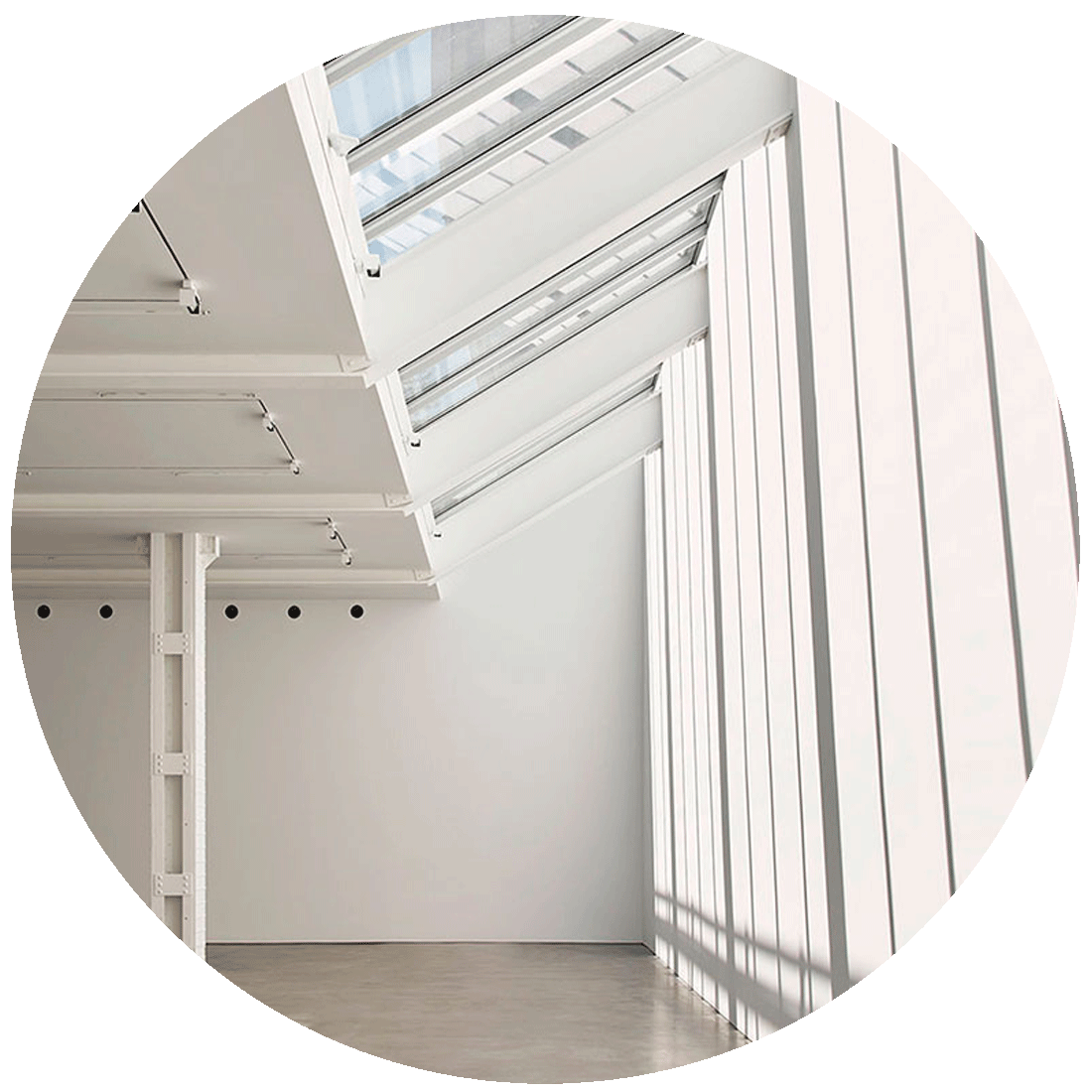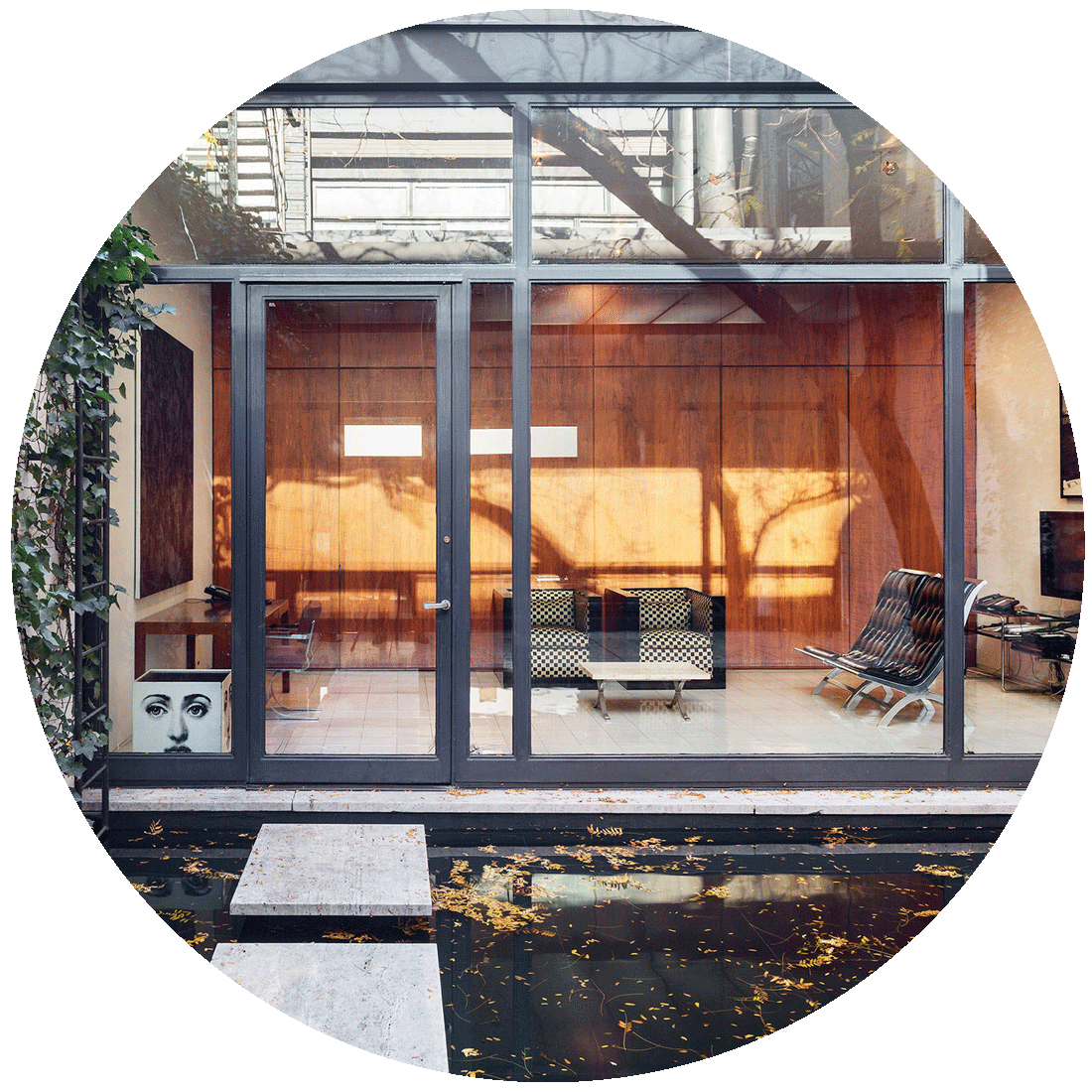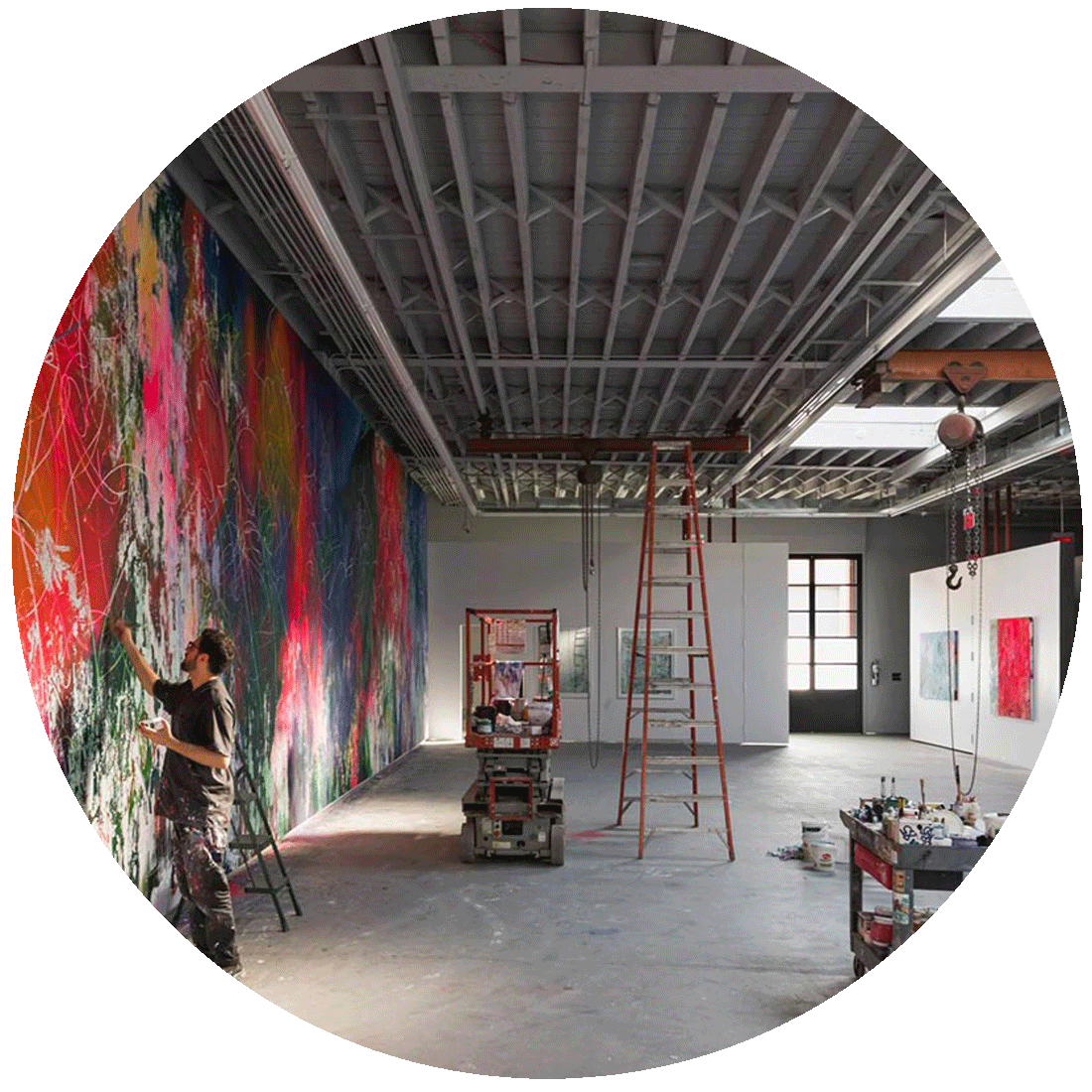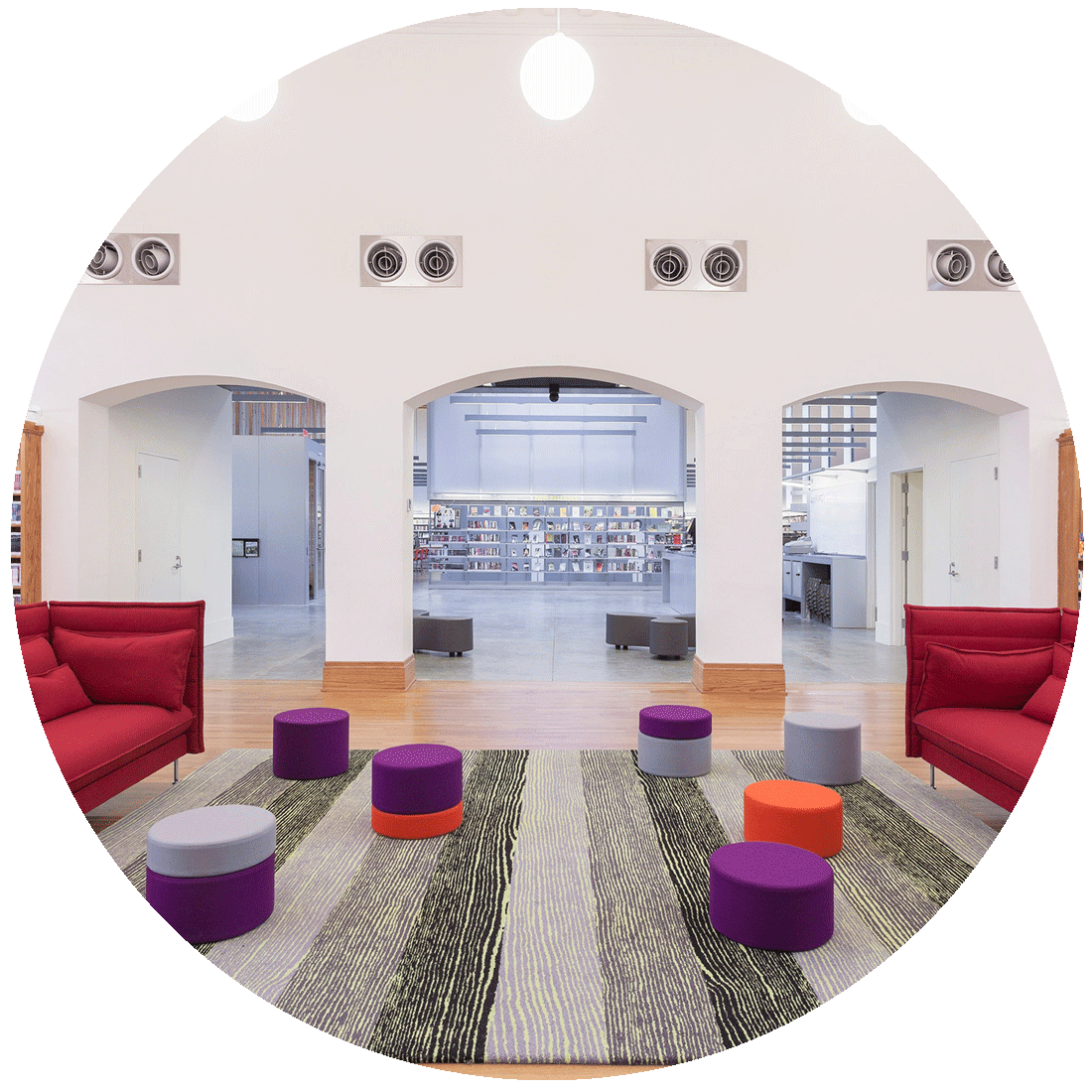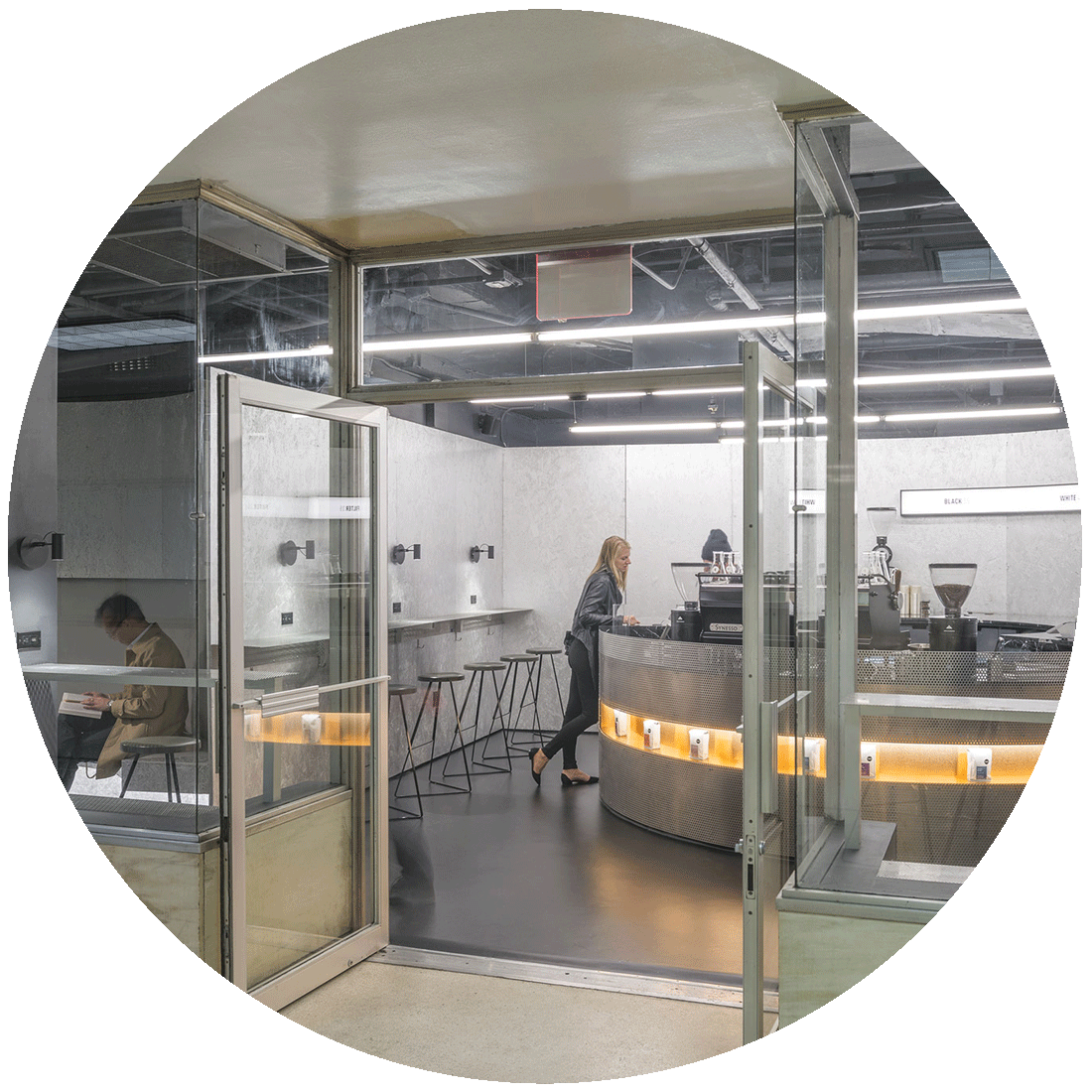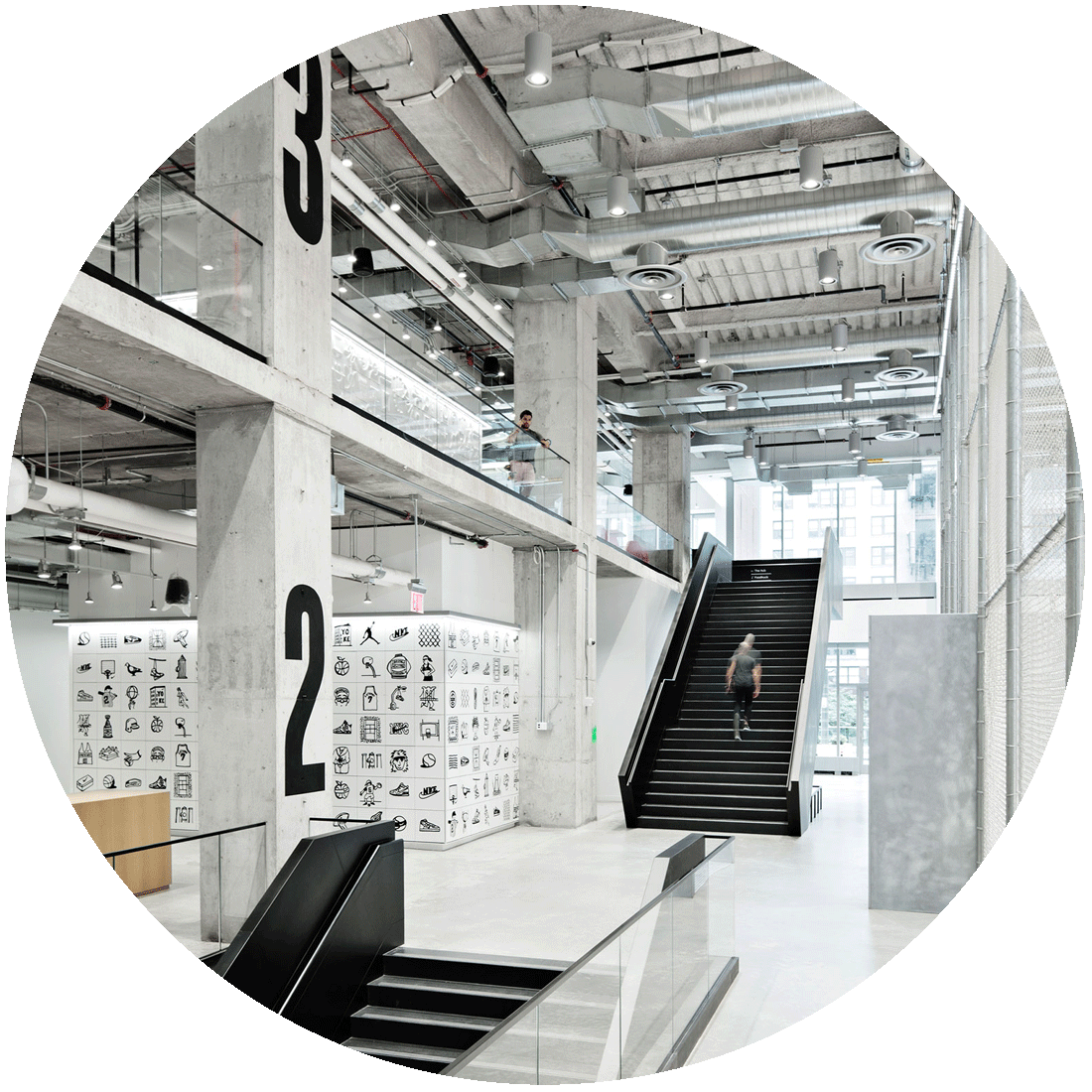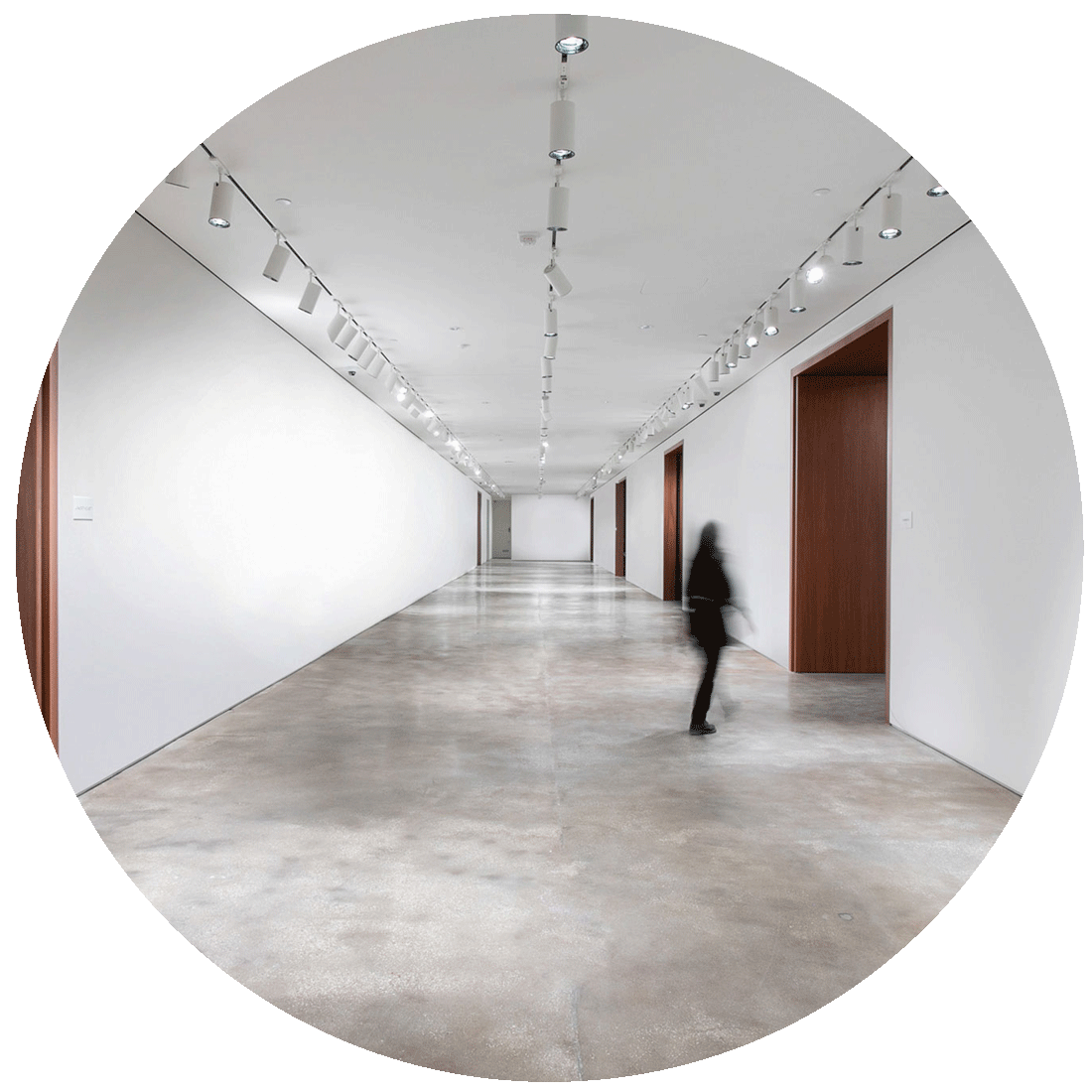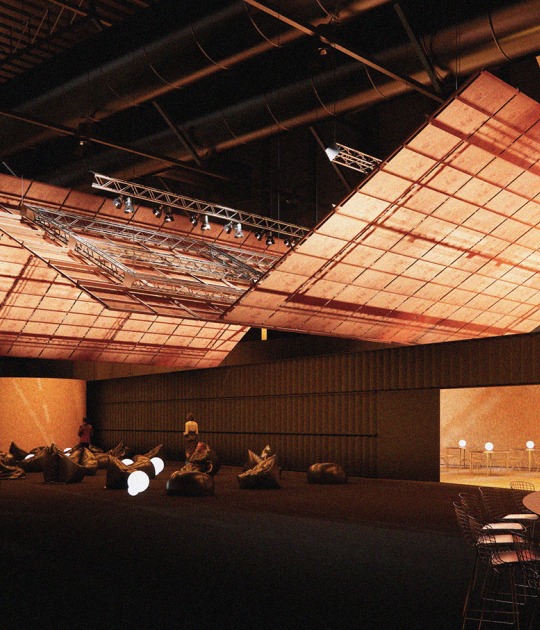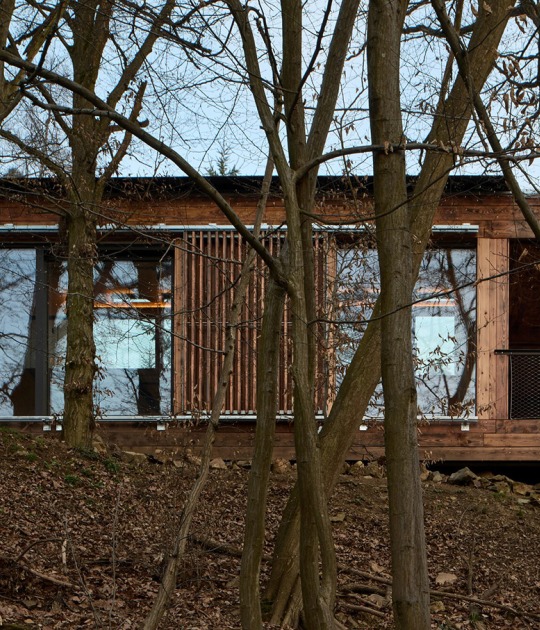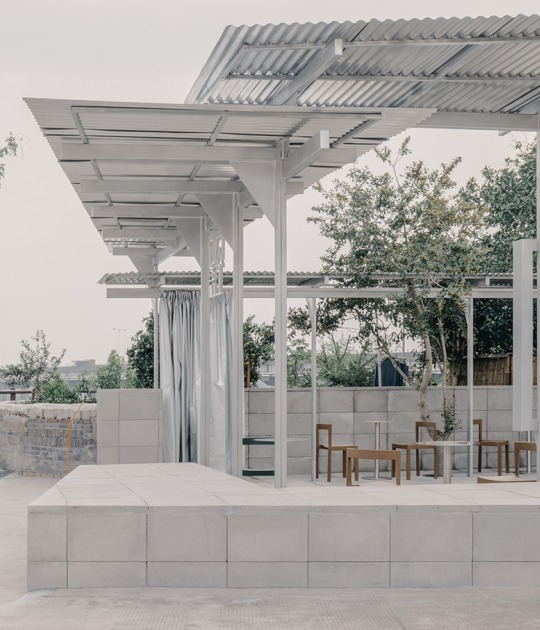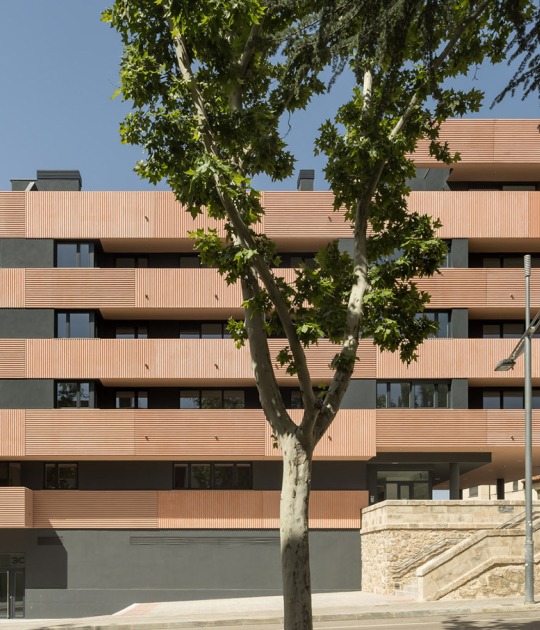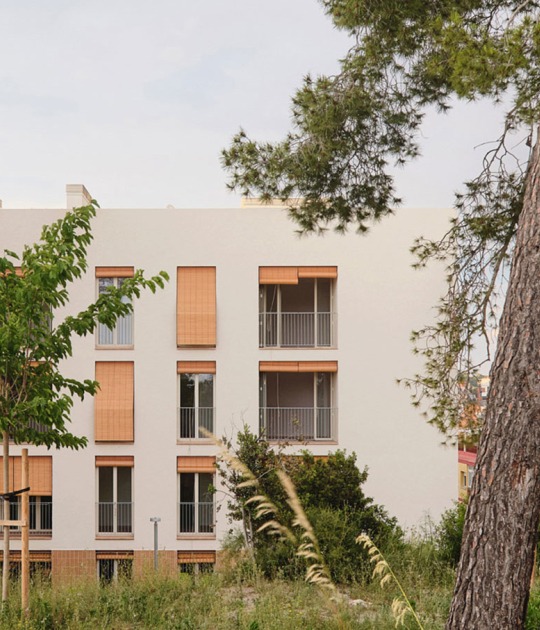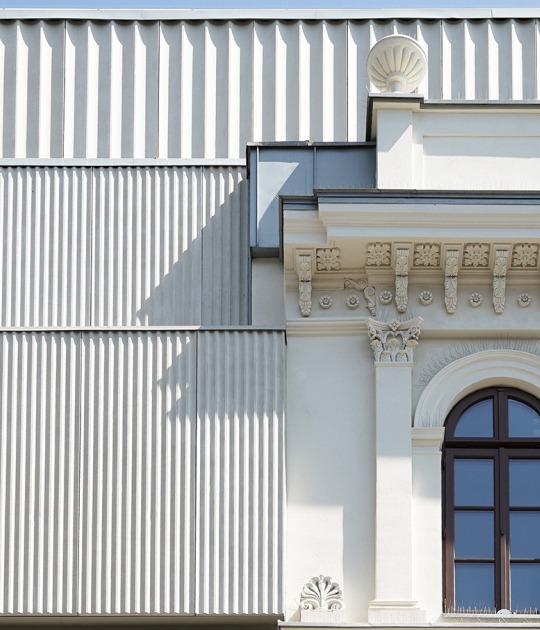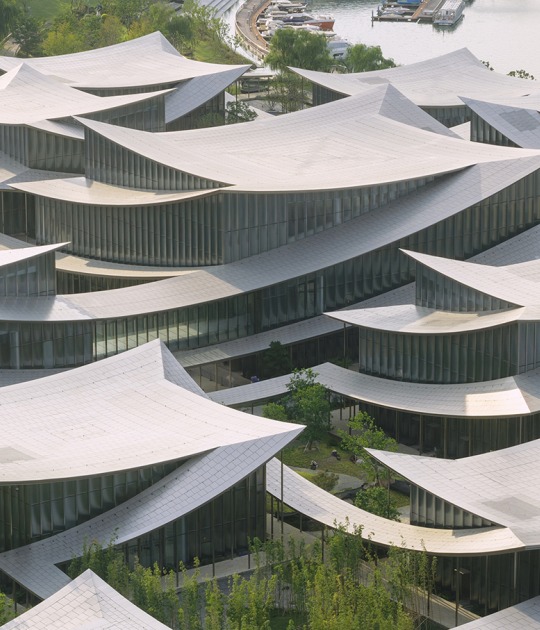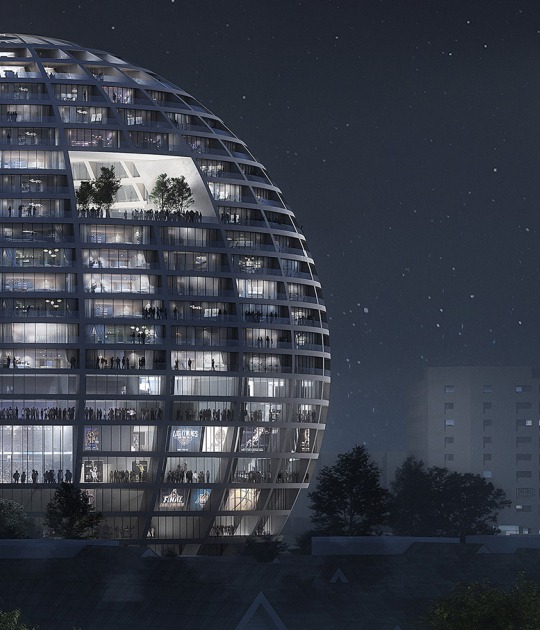1. "Filmore" inside Cathédrale Restaurant by Tresoldi Studio
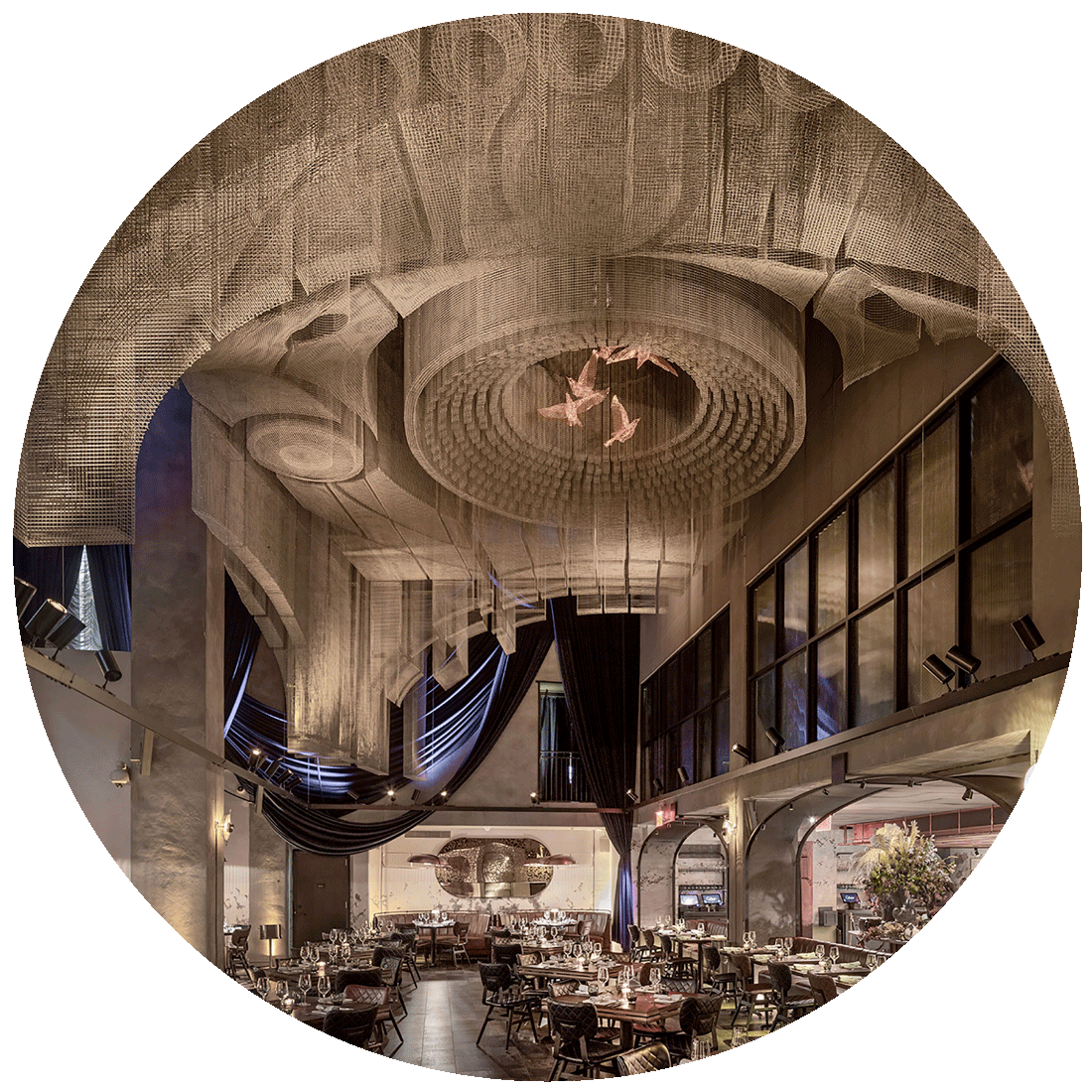
Located in the Moxy East Village hotel of Rockwell Group, on Calle 11 we find the restaurant Cathédrale, which has this spectacular mesh sculpture projected by Tresoldi Studio. The sculpture is inspired by Fillmore East, an iconic Lower East Side concert hall that closed in 1971 after years of being the scene of great musicians such as The Doors, Janis Joplin, Jimi Hendrix and many more.
The 6-meter-deep installation generates different visual games through the shapes and volumes generated with the wire mesh, a true visual spectacle in which Tresoldi Studio seeks to pay tribute to musical culture.
Located in the New York John F. Kennedy Airport we find the TWA Hotel projected by the architect Eero Saairen, which opened its doors in 2019. The complex has 512 rooms that will transport the client to 1960, as the interior design is inspired by the 1960s, in addition, the rooms will be designed to be "ultra-quiet".
This peculiar hotel projected by Eero Saairen will have a capacity to house 1,400 people, within its program we find an observation platform with a swimming pool located on the roof, where you can have magnificent views of the surroundings, it also has a peculiar lounge of cocktails housed inside a Lockheed Constellation aeroplane.
Located at the intersection between 10th Avenue and 30th Street we find Spur, a new space on the renowned High Line projected by Diller Scofidio + Renfro, the project consists of a series of balconies that extend from the lower part of the Coach Passage buildings to offer visitors magnificent views of the sky.
Once through the Coach Passage, visitors come to a large square that offers visitors magnificent panoramic views of 10th avenue and 30th street, a space surrounded by greenery and seating areas around the sculpture made by Simone Leigh the which refers to black beauty. The vegetation in the area has been made by the landscaper Piet Oudolf and offers us an excellent visual spectacle.
870-898 Gresham Rd, New York
Located on Governors Island, a 70,000m² island located a few meters from New York, we find these hills projected by the West 8 studio that complements the park's program, where you can also enjoy excellent panoramic views of the port of New York, the Statue of Liberty, Jersey City, Lower Manhattan and Brooklyn.
The project made by West 8 is composed of four hills Grassy Hill, Slide Hill, Discovery Hill and Outlook Hill, their height ranges between 7 and 21 meters, the last being the highest of the 4. Each hill offers a unique show, Slide Hill has the longest slide in New York City, at Discovery Hill we can find a work by renowned artist Rachel Whiteread and Outlook Hill has a path to the Scramble.
Located at 3 Bryant Park, is this peculiar cafeteria projected by the Only If studio for the City Of Saints Coffe chain. Inside the small premises, there are 3 differentiated spaces, the area of the bar where the coffee is made, a living room with a large armchair that surrounds the entire wall, and the toilet area.
The establishment projected by the Only If studio has the main glass door that allows you to see what happens inside the premises from the outside, a series of steps separate the entrance area from the interior in which the green colour that characterizes the brand predominates, this tonality brings freshness to space, which could be defined as a modern and quiet space.
Located on Fifth Avenue, one of the main streets in downtown Manhattan where the Takashimaya Store projected by John Burgee and Philip Johnson was located, we find the new Italian designer Valentino store projected by the architect David Chipperfield, inaugurated in 2014.
With an area of 1,400sqm on the premises, the Concept Store designed specifically for the brand by David Chipperfield is applied, however, on the ground floor, a new Accessories Concept was chosen. The exterior defines an 8-storey facade of black steel and aluminium, inspired by iconic works of the Modern Movement such as the Seagram Building by Mies van der Rohe, as regards the interior, it has a monolithic Palladian staircase that connects all the floors of the store, a neutral colour palette predominates in which the colour of the brand's garments stands out.
Located at the intersection between 8th Avenue and 55th Street we find this peculiar interactive museum dedicated to espionage projected by the architect David Adjaye, inaugurated in 2018. With an area of just over 5,500sqm, the interior of Spyscape transports us to a space of mystery and intrigue.
The museum projected by David Adjaye is divided into different zones dedicated to various topics related to espionage, from surveillance operations, deception, hacking and intelligence operations, all this was possible thanks to the architect's work with hackers or directors of intelligence agencies. The museum offers the visitor a unique experience, in addition, each space of the museum exhibits relevant figures from the world of espionage such as Robert Hanson or Virginia Hall.
Located in Brooklyn Bridge Park we find Jane's carousel, built-in 1922 this attraction has spent most of its life in Ohio until it was included in the National Register of Historic Places and moved to its current home, where the studio The architect Jean Nouvel was commissioned to project a new refuge for the relic.
The pavilion projected by Jean Nouvel is located between the pier of the Brooklyn Bridge and that of the Manhattan Bridge, has dimensions of 22 x 22 square meters with a height of 8 meters and a structure of circular steel pillars, while the carousel has a diameter of just over 15 meters. The outer shell is made of acrylic panels, the North and South facades open completely to allow the public to pass through, while the East and West facades are fixed and completely transparent, thus offering splendid views of the surroundings.
Storefront for Art and Architecture is a non-profit organization created in 1982, located on a corner where the intersection between three neighbourhoods Chinatown, Little Italy and Soho takes place, this gallery is one of the most committed to the work of young artists from New York. In 1992, the architect Steven Holl in collaboration with Vito Acconci renovated the gallery.
With almost 30 meters in length, the peculiar facade of the Storefront for Art and Architecture gallery projected by Steven Holl is composed of a series of hinged panels that are arranged as if they were a puzzle, in this way the panels can be arranged towards the outside connecting the gallery interior with the street, which gives a lot of play when making the exhibitions, these pieces are made with a hybrid material that mixes concrete and recycled fibres.
Located on Roosevelt Island formerly called Welfare Island, this park has a history behind it, because in 1960 Mayor John Lindsay had the idea of turning the island into a new residential area, however in 1973 Governor Nelson Rockefeller and John Lindsay arrived In an agreement to build a monument to Franklin D. Roosevelt on the island, the architect chosen to make the work was Louis Kahn, thus the Four Freedoms Park project was born.
However, the architect Louis Kahn passed away in 1974, and New York was nearing bankruptcy, therefore, it was not until 38 years later that the construction of the Four Freedoms Park could not begin, which was finally inaugurated in 2012. The park was It is defined as a large platform with a central corridor of trees that narrows until it reaches the river, where there are excellent views of the city.
355 West 16th St, New York
Located in the Chelsea neighbourhood, west of Manhattan, what was once the main annexe of the National Maritime Union of America today is the Dream Downtown Hotel projected by Handel Architects. In its 17000sqm, we find 12 floors in which the 316 rooms, restaurants, lounges, roof terrace, swimming pool, bar and gym that the complex offers are distributed.
The complex projected by Handel Architects is finished with stainless steel pieces on the façade that faces 17th street, in which the circular-shaped windows stand out, while on the façade that faces 16th street the finish is done in pieces made of perforated stainless steel. Both the facilities and the furniture were designed specifically for the project, in this way we seek to offer a better customer experience.
Located in the renowned Rockefeller Center shopping complex is the Camper store projected by Jonathan Olivares, the designer is inspired by the stores that surround the complex. It has mobile filing cabinets to eliminate warehouses in a nod to the work of Raymond M. Hood, who placed the first escalator in a commercial space when he designed Rockefeller Center.
It uses Indiana limestone for the design of the exhibitors and benches, inside the store is painted with aluminium paints with a palette of neutral colours that make space look submerged in the neon lights of the Camper logo.
Located on 24 Street, next to the renowned High Line is the Lisson Gallery projected by Studio MDA and Studio Christian Wassmann, this new gallery will complete the two London headquarters and the Milan headquarters. With an area of just over 2,500sqm, most of the building with almost 1,400sqm is dedicated to the gallery, while the remaining area is divided between offices, display space and storage.
Although on the outside it seems a rather small space, the interior of the Lisson Gallery is quite spacious, large multipurpose spaces are defined in which the colour white predominates, and they are flooded by natural light that enters from the large windows located in the extremes.
Located near the intersection between Third Avenue and East 52nd Street is the Guest House projected by the renowned architect Philip Johnson built between 1949 and 1950, the house was commissioned by Blanchette Ferry Hooker Rockefeller, despite being one of the Lesser known works of the architect, inside it holds many surprises.
The Guest House projected by Philip Johnson stands on a rectangular plot of approximately 8x30m, on the facade, there are two areas, in the first half a large brick wall interrupted by the access door and in the second half 3 large windows that illuminate both the floor low, like the first. Inside, its 30m deep are illuminated thanks to a central patio, which has a slab of water that can be crossed by a flagstone path.
Located in Gowanus, in the Brooklyn district, we find the new studio of the artist José Parlá, which at the time was an old warehouse, today has become an incredible studio thanks to the Snøhetta architecture firm. The artist and the architecture studio had previously collaborated on other works such as the facade of the Far Rockaway Public Library in Queens or the mural of the James B. Hunt Jr Library at North Carolina State University.
The creation of the studio has also been the product of the collaboration between José Parlá and Snøhetta, the space is divided into two parts "the sand and the nest" in the first of them is the main work area with a space for exhibitions, While in the part of the nest space is created for the artist to disconnect from work, inside a palette of neutral colours predominates, in this way the vivid colours of the artist's works stand out more.
Located in Stapleton, Staten Island, the Stapleton Branch Public Library, which is one of the branches of the New York Public Library, underwent rehabilitation and expansion a couple of years ago by the study led by architect Andrew Berman, The complex was designed in 1909 by Carrere and Hastings, the initial surface of the building was about 650sqm, and it was enlarged to 1,115sqm.
One of the challenges faced by Andrew Berman was that the requirements for the expansion were that the new volume is developed on a single level and had to be attached to the previous building, as a result, the old library was restored true to its appearance, and the children's room was placed in it, while the adolescent and adult areas are located in the new volume, separated by a common room.
Located in an esplanade of the subway of the Fulton Street station, in Manhattan, is this new specialized cafeteria projected by the Only If studio, through the materials and the neutral colour palette, the studio seeks to create a similarity to the homonymous spaceship Inside the Voyager Espresso, the walls are finished with OSB fibre panels, while the work area is defined by a black marble countertop with a texture similar to that of the wall finish.
Inside, space projected by Only If is organized in two areas, on the one hand, we have the space for the service, and on the other the space for the seat. From the outside, the large windows of the premises allow the visualization of everything that happens inside. Upon entering, the large circular marble countertop allows workers a panoramic view of the establishment.
In 2017 the renowned brand Nike opened its new offices in New York City, the project was made by the WeShouldDoItAll studio, in its 13,935sqm of surface, the complex has an indoor basketball court, work areas, a food truck, training areas and a garden.
WeShouldDoItAll seeks for the project to express the union between the brand and New York City, which is why Nike's creative director, Michael Spoljaric also collaborated with the studio, all the typography of the signage has been made specifically for the project, inside of the complex we can find different unique decoration elements that refer to the roots of the brand.
Located at the intersection between York Avenue and East 72nd Street is Sotheby's, one of the best-known commercial art spaces in the world, in 2019 the architecture firm OMA made an expansion of the galleries, so currently the complex has 40 galleries of 20 different types distributed in the 4 heights of the building.
The architecture studio OMA seeks that the project has a rapprochement with the public, therefore all the activities and programs dedicated to the public are located at the lowest levels. Instead of creating adaptable multipurpose spaces, OMA projects spaces that are multipurpose through diversity, in this way spaces are not created that ultimately do not adapt to any program. The interior is dominated by a neutral colour palette such as white, the large columns on the ground floor stand out, creating a sensation of being embedded in the ceiling.
Rafael Guastavino was a Spanish architect and builder, who developed much of his work in the United States, with an architecture in which vaults and tiles of various shapes and colours predominated. Guastavino built several works in New York that today are considered true gems of architecture.
Within Guastavino's work in New York, we can highlight the City Hall(1) subway station, the renowned Oyster Bar and the vaulted gallery of Queensboro. The first one is defined as a set of glazed vaults with tiles in greenish tones, the complex transports the visitor to another dimension as if it were a station in some magical Harry Potter universe.
The Oyster Bar is part of the Grand Central Station project and was built to highlight the high economic level of the station, for its part, the market under the Queensboro(2) Bridge was originally conceived as an open space to the However, due to various problems, steel enclosures had to be added to the complex, something that disrupted its image, finally the complex fell into disuse and closed its doors in 1930.
1. New York, NY 10013, USA.
2. 409 E 59th St, New York, NY 10022, USA.
